
Can you paint over stained wood and gumwood? A huge concern for many homeowners seeking to refurbish or renovate is whether painting over stained wood and gumwood is possible. It is possible and lies in your hands, despite the argument over whether you should or should not. Painting over stained wood and gumwood doors or gumwood trim in your house is indeed your own choice. But, with the right preparation and a little bit of know-how, you will never be scared of painting over those oil-stained wood surfaces and gumwood ever again.
To be honest, there really isn’t that much to be afraid of in the first place. All you need is the right painting tools, paired with the list of Do-It-Yourself steps below and you will be painting over those wood-stained or gumwood surfaces in no time.
Understanding Stained Wood and Gumwood
To fully appreciate the aesthetics and quality of your home interiors, it’s important to understand the materials used. Two materials commonly used in home decoration and furniture include stained wood and gumwood.
Wood Staining: Enhancing the Grain
Stained wood refers to timber that has undergone the process of “staining”, which involves:
- Preparing the Surface: Sand the wood to even out the surface and reveal the grain.
- Applying Wood Stain: A special type of paint thinner, rich in pigment, is applied. The stain sinks into the wood rather than forming a layer on top, accentuating the grain.
- Drying and Sealing: The stain must dry (which can take several hours to days) and then is typically sealed with varnish or lacquer to protect the colour and wood.
With this process, the characteristics and features of wood types can be enhanced or altered without hiding their natural beauty. Stained wood can vary significantly based on the type of stain used and the wood species. Colours can range from light golden hues to deep, rich with a dark espresso finish.
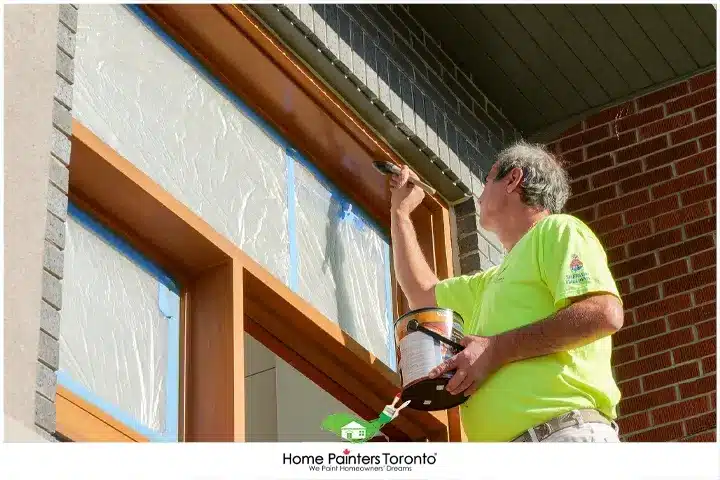
An Enduring Classic: Gumwood
Gumwood, or “sweet gum,” is a type of hardwood native to the Americas. Here’s what makes gumwood unique:
- Colour and Grain: Gumwood has a deep reddish-brown colour and often exhibits a variety of patterns in the grain, making each piece unique.
- Durability: In addition to its beauty, gumwood is known for its durability. It’s resistant to decay, making it suitable for items like furniture, trim, and flooring.
- Chameleon Nature: Though the wood has a distinctive colour, it’s often stained to resemble other woods, like mahogany or walnut.
When maintained properly, both stained wood and gumwood can add timeless beauty to your home, increasing its aesthetic appeal and value.
By understanding these materials, you equip yourself with the knowledge necessary to take on DIY projects or make your next investment in home furniture pieces. Regardless of whether you choose to keep the wood’s natural stain or paint over it, remember, that the end goal is to create a space that brings you joy and comfort.
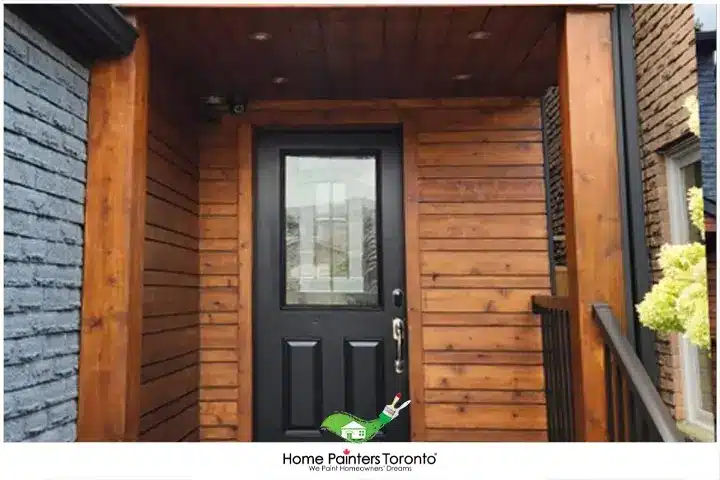
Steps to Painting Over Stained Wood
A completely transformative process, painting over stained wood isn’t just aesthetically satisfying; it’s a practical way to renew and refresh furniture. Here’s a step-by-step guide to help you through the process.
Step 1: Get familiar with stained wood
Wood stains don’t just cling to the surface of the wood like paint or varnish. It sinks into the grain, making the wood itself a different colour, not just covering the surface. Therefore, you will need to prepare the wood-stained surface for exterior painting or interior painting by applying a material (such as a primer), which will allow the paint to bond to the surface.
Step 2: Get the wood ready for painting
The first and foremost rule on how to paint over stained wood furniture is that you will need to clean up the surface area before you do anything. Take note of these: a tack fabric will eliminate fine particles and dirt, and a degreasing detergent will eliminate grime and grease. Follow it up with a thorough wash to eliminate any residue from the cleaners you’ve used. Ensure that everything is totally dry before you proceed to the next action. Fill and repair any holes and deep scratches using wood putty. Avoid using a spackle, as it will not stick. As soon as your wood putty has totally dried up, it is now time for the dustiest part, the sanding.
Wondering how to paint over stained wood without sanding? This is a usually asked question by many. While some of the best primers for painting over stained wood companies state it’s possible, you ought to sand down your stained wood with 150-grit sandpaper for the most pleasing results. When utilizing sandpaper, your goal is simply to make the surface area rough enough for the paint to have something to stick onto. Feather sand down the areas you will be painting and scuff them up to prepare the wood for painting/primer. There’s no requirement to remove the entire surface area of the wood. After sanding the wood, wipe it down with a tack cloth instead of a paper towel, as it might not be efficient, unlike a tack cloth.
This will help eliminate any residue and particles left by the sandpaper. You don’t have to completely remove the stain, just take the gloss off of the finish, making the surface coarse enough for the paint to bond to it.
Step 3: Select the primer and apply it
Now that the surface area is sanded and thoroughly cleaned, you are all set to prime and paint. Priming first is essential, especially if you paint over a darker stain. You have to apply the right primer before painting over stained wood. So the answer to the question. “can you paint over stained wood without priming?” is a big no. You can find a stain-blocking primer readily available at any store, but having your guide tinted slightly to match the stain will help.
Applying a primer will stop the paint from seeping through and help it to stick to the applied surface. Low Odour Oil-based primers work best for painting stained wood. Kilz at Home Depot has a good low odor primer as well as Para and Benjamin Moore.
Use shellac or an oil-based primer to paint over stained wood and gumwood. Just a short trivia for those who are wondering what gumwood is. It is a really close-grain wood of fine texture, which is frequently called a softwood; however, it is categorized as a hardwood by its producers. It is harder than white pine but not as hard as maple, oak or birch, so it may well be called a medium-tough wood. Going back to the topic.
Oil-based primers are known to help protect wood surface areas better than water-based primers. When priming, make sure to use a foam brush and roller to get the best results.
Step 4: Select the paint and apply it
After priming the wood, the next action to be taken is to paint it. Simply grab a new foam roller and apply at least three coats of either oil-based paint or latex. Oil-based or waterborne paints are generally best for painting over stained wood. Oil-based paints typically get bad impressions for their volatile organic compound content. These solvents are spread into the air as it dries, resulting in a smell that frequently remains and is not good for you and your household. Oil-based paint is perfect for high-traffic locations like decks and porches because it lasts longer and provides the utmost protection.
There is low-odour oil-based paint on the market, or you can opt to choose a waterborne alkyd paint. It performs the same as an oil-based but is likewise low VOC which is a significant consideration. Satin to semi-gloss finish is normally recommended for cabinets and furnishings. On the other hand, a semi-gloss to high gloss finish works well for baseboards or trim.
You can choose a latex-based
If you so desire, oil or waterborne paints work the best. Since it doesn’t leave an odour behind when you’re done, painting over an oil-the based stain with latex paint is perfectly suited for doors and cabinets. If you intend on utilizing latex paint, be prepared to sand your oil-based primer ahead of time to help the paint stick to the primer. You can also utilize a latex primer to avoid sanding, which works with latex paint. It works well in newer homes with stained wood. However, it will not obstruct the stain and is not as resilient as it may seem. Nonetheless, if you ask the verdict on what type of paint to use over stained wood. The answer is that oil-based paint is the more reliable and perfect choice if you want to paint stained wood and gumwood.
Home Painters Toronto Tip
Use painter’s tape
To protect any areas that you don’t want to get paint on. Painter’s tape is more efficient at reducing paint bleed. It is also simpler to eliminate than standard masking tape without ruining the surface underneath. Painter’s tape is more versatile than masking tape and does not bubble up when used. The air bubbles can permit the paint to leak under and ruin your work. It remains stuck to the surface, leaving a clean paint line between surface areas. Masking tape can also leave tidy lines, like painter’s tape, but typically isn’t recommended.
It can frequently tighten up when utilizing latex paints, which enables the paint to leak under. Likewise, masking tape can often leave a sticky residue if left on for too long; it needs to be eliminated immediately. Masking tape is generally a bit less expensive but doesn’t offer the advantages of a reliable painter’s tape.
The key factors
Remember that perseverance and attention to detail are the key factors necessary to paint over oil-stained wood yourself instead of hiring a professional contractor. Just thoroughly follow our guidelines for your painting project. Also, make sure you have the correct painting brushes or rollers, paint trays and paint thinner for rinsing new brushes. (read more)
Apply an even coat
Over the existing primer coat. Keep the brush evenly coated in paint to eliminate visible brush strokes. Six-hour breaks are needed in between each coat of paint for best results when painting over stained wood. Constantly watch for defects and paint drops or bleeds. Provide yourself with a minimum of 2 days to complete the entire procedure.
Wait until the paint is completely dry
Very often, if it looks like the surface still needs another coat, wait until the paint is completely dry. Oil-based paints can take 1-2 days to dry, and latex is much faster. When you are ready to apply the second coat of paint, lightly sand the painted surface again, wipe it down with a liquid sander or deglosser, and then apply the second coat of paint. Then you’re done with your home painting project!
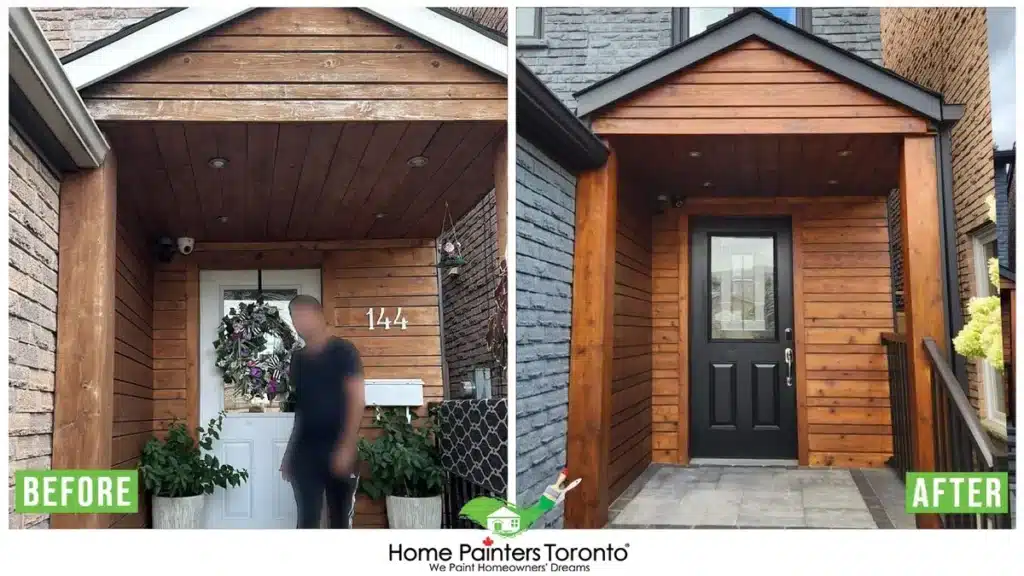
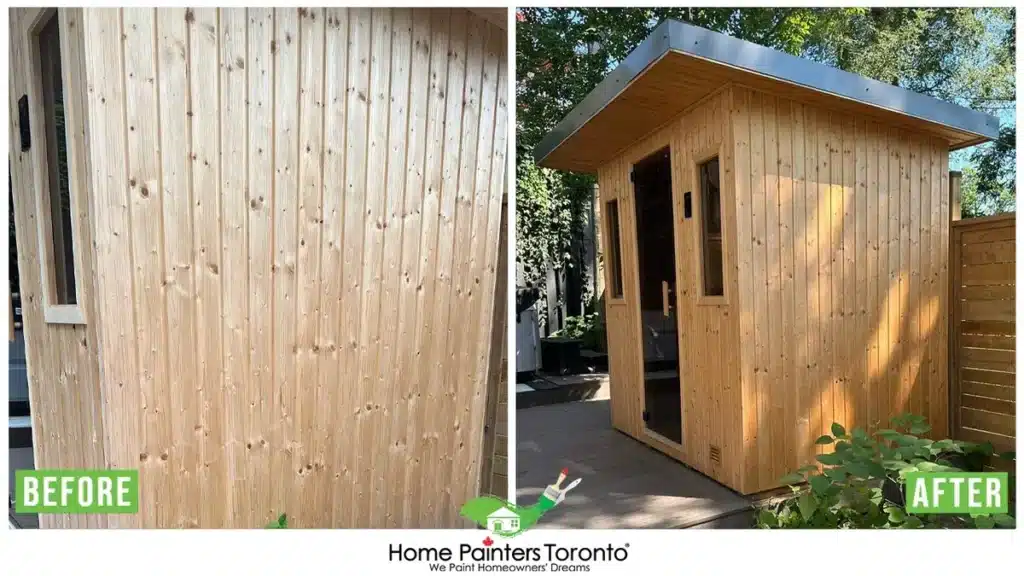
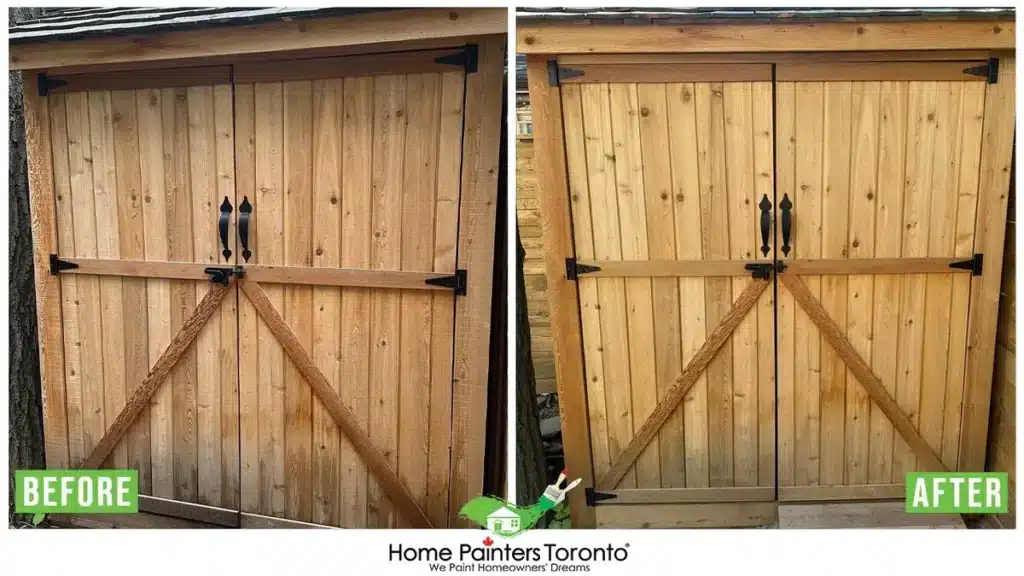
If you’re thinking of doing some home painting but don’t want to do the work yourself, let our painters help! Even if you are undecided, professional house painters can help you with any problems or questions you may have.
If the work involved sounds like it involves too much time and energy to do yourself, call 416.494.9095or email [email protected] for a FREE quote. And don’t forget to follow us on all our social channels below as well!


